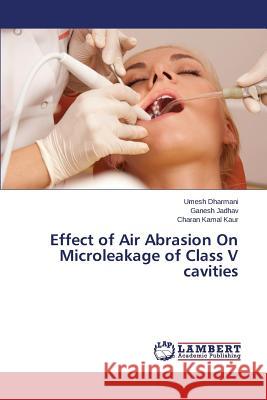Effect of Air Abrasion On Microleakage of Class V cavities » książka
Effect of Air Abrasion On Microleakage of Class V cavities
ISBN-13: 9783659625374 / Angielski / Miękka / 2014 / 80 str.
An in vitro study was undertaken to evaluate the effect of dentin preconditioning with air abrasion on microleakage of class V cavities restored with GIC and Microfilled composite under cyclic loading. 40 mandibular first premolars were taken and divided into four groups. Group I and II were restored with GIC and Group III and IV with microfilled composite. Group I was preconditioned 10% polyacrylic acid Group III with 35% ortho phosphoric acid and group II and IV with air abrasion. Each group was further subdivided in two subgroups, A & B, with each having 5 samples. All subgroup B of each group were subjected to cyclic loading. Loading was done on buccal cusp at an angle of 20 degree to long axis of the tooth. Load of 60 N was applied by the cyclic loading machine at the frequency of 4-6 cycle/sec. After completion of 1, 50,000 cycles (corresponding to six months of clinical usage), sample were analyzed for microleakage. The results were tabulated and evaluated.
An in vitro study was undertaken to evaluate the effect of dentin preconditioning with air abrasion on microleakage of class V cavities restored with GIC and Microfilled composite under cyclic loading. 40 mandibular first premolars were taken and divided into four groups. Group I and II were restored with GIC and Group III and IV with microfilled composite. Group I was preconditioned 10% polyacrylic acid Group III with 35% ortho phosphoric acid and group II and IV with air abrasion. Each group was further subdivided in two subgroups, A & B, with each having 5 samples. All subgroup B of each group were subjected to cyclic loading. Loading was done on buccal cusp at an angle of 20 degree to long axis of the tooth. Load of 60 N was applied by the cyclic loading machine at the frequency of 4-6 cycle/sec. After completion of 1, 50,000 cycles (corresponding to six months of clinical usage), sample were analyzed for microleakage. The results were tabulated and evaluated.











